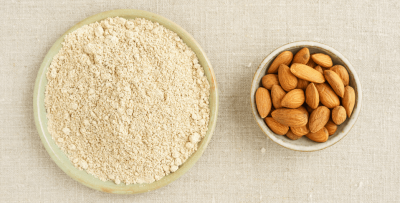 Flavorful figs are Middle East natives. Green Prophet Linda Pappagallo wrote about this in a swell story about the versatile little foodstuff. Did you know they come in more than 750 varieties? They also come with a little surprise tucked inside – a secret ingredient that will delight and disgust you in equal measure.
Flavorful figs are Middle East natives. Green Prophet Linda Pappagallo wrote about this in a swell story about the versatile little foodstuff. Did you know they come in more than 750 varieties? They also come with a little surprise tucked inside – a secret ingredient that will delight and disgust you in equal measure.
File this under “you are what you eat”, or maybe under “Nature rocks!”.
It turns out that most of the figs we eat contain at least one dead wasp. It’s true. Not a fruit fly (figs are not fruit, but more on this later), not a mosquito (no fear of fig-related Zika), but a tiny little insect whose relationship with a tree spawned a global love affair with a food that reaches back to antiquity.
The common fig is not a fruit, but an inverted flower. Its blossoms grow within the pear-shaped pod, and later mature into the sweet, seed-laden pulp that we love to eat. Because fig flowers bloom internally, beyond the reach of bees and wind, they require a special pollination process. Here’s where the fig wasp comes in. Take that literally.

Look at the bottom of any fig, and spot a tiny belly button (see image above). It’s leads to a narrow passage called an ostiole, and the female fig wasp uses it to crawl inside to lay its eggs. It’s not pretty. She will scrape off her wings and antennae pushing her body through the tiny opening, and if she mistakenly enters a female fig, it’s game over, as only male (called caprifigs) have special chambers suitable for egg-laying. Incidentally, we don’t eat male figs; only the females are fit for human consumption.
Eggs deposited, she starts to drop pollen too, until she soon dies of exhaustion, or loneliness?, or starvation. Her sons hatch first, emerging blind and wingless. They seek out their sisters – as yet unborn – and impregnate them. Now the boys start eating their way out of the fig, in the process carving new escape tunnels from which they never emerge (that exhaustion thing again).
The girls awaken, and set to work collecting the pollen. They crawl out the tunnels made by their bros and fly away to lay their own eggs in other male figs. The circle of life.
So is that natural crunch of a fig a wasp carcass? Nope, just seeds. An enzyme called ficin breaks down the dead wasps into protein that becomes an integral part of the fig. Learn more about the cycle in the video clip that follows:
[youtube]https://youtu.be/9DQTjv_u3Vc[/youtube]
This relationship between wasp and tree is called mutualism and it has evolved over 80 million years. Science has proven that groups of genetically well-defined pollinator wasp species coevolve in association with specific groups of figs, resulting in the constant evolution of new pollinator wasp species. The upshot is an always-increasing diversity in figs.
Has this info turned you off the fragrant fig? Hopefully it’s turned you on to the wonder of nature. August is prime picking for figs. Check out other stories from Green Prophets Karin Kloosterman, Kelly Vaghenas, and Miriam Kresh for recipes including a fancy Fig Ice Cream. And yes, despite dead bugs, figs are perfectly vegan.



